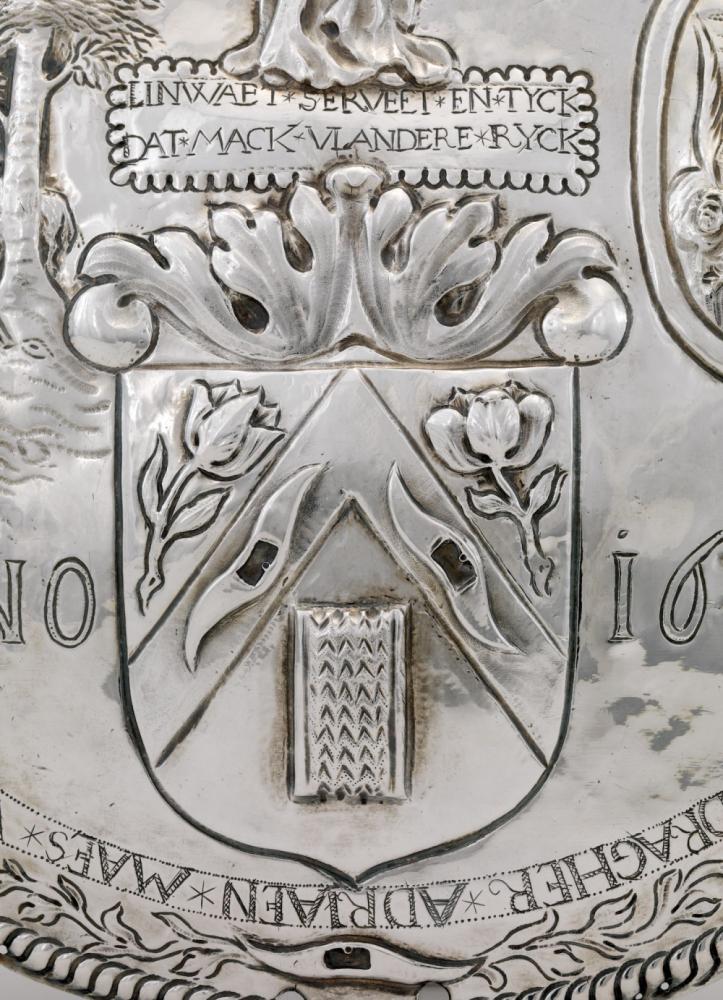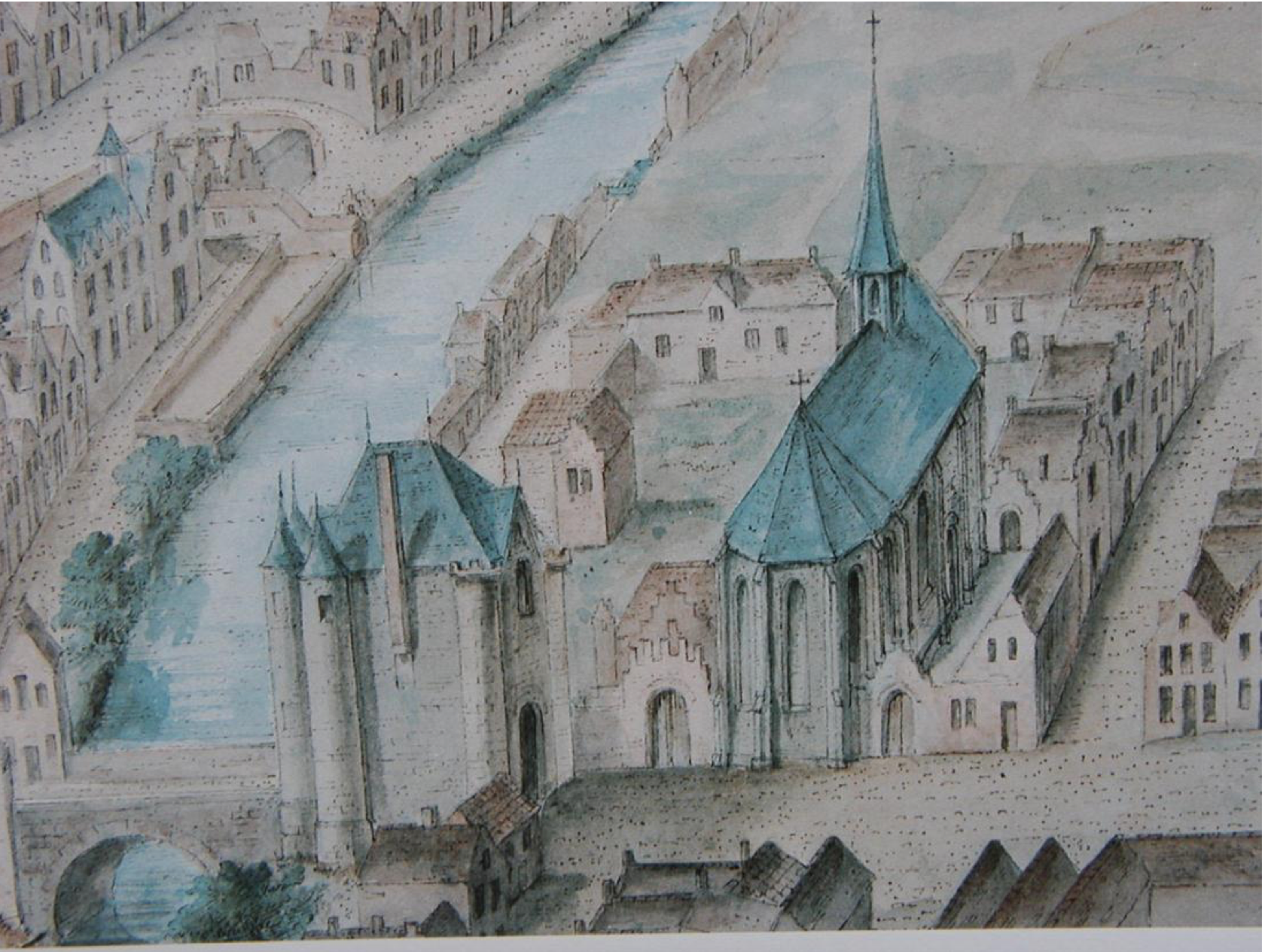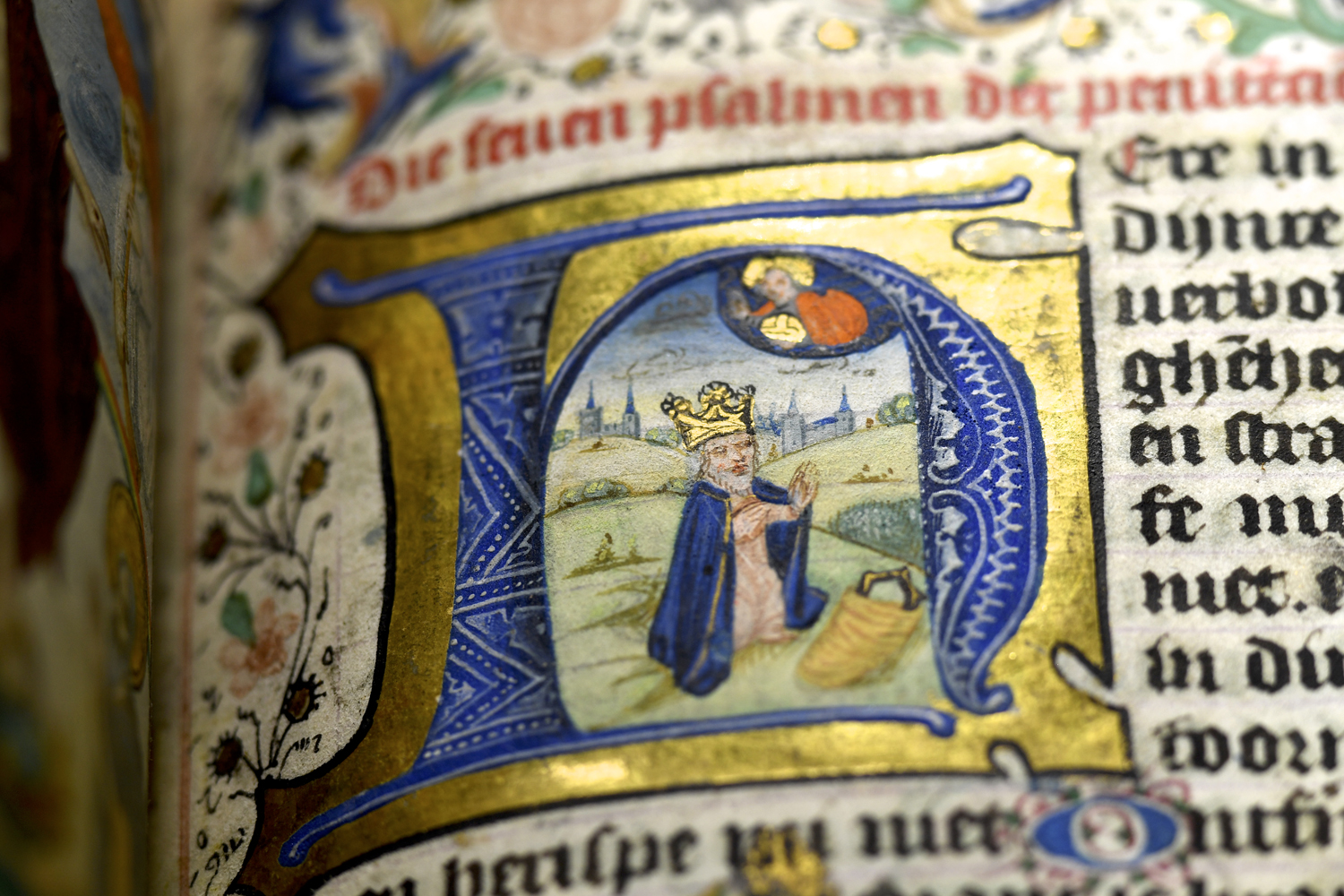 |
Guilds and tradesIn the Middle Ages, warriors and knights wore heavy suits of armour. They decorated their shields with a symbol so that enemies could be distinguished from allies on the battlefield. Each warrior had his own unique coat of arms. Coats of arms soon became very important, and in the 13th century they were widely used by cities, guilds, states and kingdoms. Guilds usually based their coat of arms on the trade they were in. Butchers chose a sheep or an ox, carpenters a hammer or another implement. Sometimes, they adopted their lord’s coat of arms in part or in full, while the figure and attributes of a patron saint were also very popular. More than any other coats of arms, these guild signs were subject to constant evolution. In old cities, it took until the sixteenth century before they took on their final shape, and even afterwards changes still occurred. |
 |
The guild of wool weaversAlthough its original purpose was to exert rigorous control over its members, the trade association of wool weavers eventually became a real guild and an economic and political force to be reckoned with. The Ghent city archives contain documents dating back to 1360 which mention a hospital of the weavers’ guild located near Walpoort in the parish of Saint John. The exact date of establishment has not been discovered, but it is plausible that the wool weavers’ chapel already existed or was under construction at that time.
|
 |
The guild of Saint LukeThe Guild of Saint Luke protected painters and other artistic craftsmen who had the Evangelist Luke as their patron saint. The guild was named after Saint Luke the Evangelist, whose writings are considered the most expressive, with an eye for detail and atmosphere. According to a 6th-century legend, Saint Luke painted a portrait of the Virgin Mary.Painters, decorators, sculptors and engravers as well as potters, printers and art dealers could become members of the guild, which ensured quality control and provided training to talented young apprentices. From 1440-1450 onwards, the various regions that had been subjected to the rule of the dukes of Burgundy became the epicentre of the production and innovation of illuminated manuscripts and miniatures. The list of 15th-century miniaturists includes names such as Rogier Van Der Weyden and Jan Van Eyck. |
THE GHENT ALTARPIECE: medieval Ghent
Sources
Books
-
VIJD Het verdriet van het Lam Gods
Bruyneel, Jonas (2019) - Uitgeverij Lannoo -
MAGNUM OPUS, het leven van Johannes, Hubert, Lambert en Margaretha Van Eyck
Raymond Corremans (2018) - Uitgeverij C. De Vries-Brouwers -
Een wonderbaarlijke tuin. Flora op het Lam Gods
Hilde Van Crombrugge en Paul Van den Bremt (2016) - Uitgever:Provinciebestuur Oost-Vlaanderen, Monumentenzorg
Websites
- https://lukasweb.be
- https://www.academia.edu
- https://visit.gent.be
- http://www.ghendtschetydinghen.be
- http://vlaamseprimitieven.vlaamsekunstcollectie.be
- https://www.kerknet.be
- https://www.mskgent.be
- https://www.youtube.com
- https://www.wikipedia.org
- http://static.digischool.nl
- https://www.historium.be/



